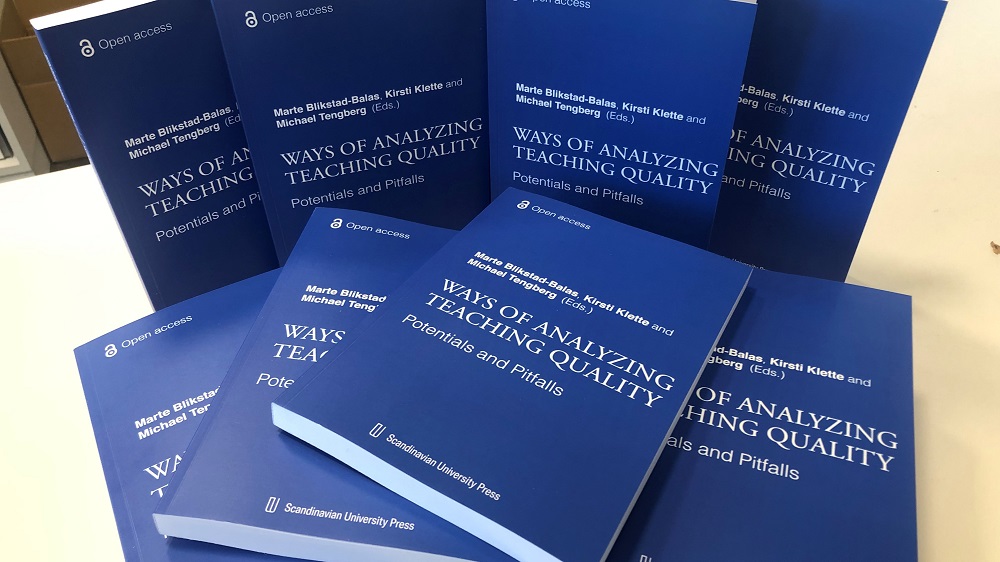It's not controversial to claim that what teachers do in their classroom will affect students’ learning. In many ways, that is the whole concept of education. Recent research shows a clear link between quality of teaching and student achievement. In fact, there is strong evidence to suggest that this may be the most important factor in determining student outcomes, more important than class size, classroom environment, or teachers’ level of training. But measuring teaching quality presents a number of challenges for researchers. There is disagreement among scholars on the ‘what’ and ‘how’ of measuring teaching quality, as well as a plethora of different theoretical and methodological frameworks used to study teaching.
In the recently published book Ways of Analyzing Teaching Quality, scholars from around the world have joined forces to discuss the dilemmas associated with studying teaching quality, looking at methodological, theoretical and substantial issues. The book was edited by Marte Blikstad-Balas, Michael Tengberg and QUINT Director Kirsti Klette. To learn more about the new book we talked with two of the editors, Marte Blikstad-Balas from the University of Oslo and Michael Tengberg from the University of Karlstad.
What was the impetus for creating this book?
"During the annual QUINT conference in 2019* there was a lot of really valuable discussion taking place between researchers about analysing teaching quality, and it seemed a shame for that discussion to only be shared with the people in the room at the time. We wanted to make the insights from that conference available to a wider audience, because we think they could be useful to all scholars working with teaching quality" Blikstad-Balas explains.
What gaps in our knowledge, or in the discussion around teaching quality, does this book fill?
"Well, there are many different approaches both theoretically and methodically on how to study teaching quality. Everyone agrees that studying teaching quality is important, but exactly how we should go about it is still very much an open question. What we’ve tried to do here is provide a collection of new knowledge that can help us identify some key areas in theory and methodology we should focus on to help move us towards a common understanding of what teaching quality is, and how it can be measured" says Tengberg.
Can you give us an overview of what the book contains, Blikstad-Balas?
"The book is eight chapters, each written by a researcher or researchers within the extended QUINT network that study teaching quality. You can divide the book into three themes: Theoretical, methodological, and empirical contributions, so it covers quite a lot. We wanted it to give a picture of the state of the field, but importantly we also wanted to present the new knowledge that we see coming out of the work that researchers at the QUINT centre and its broader network are doing. We think – and hope – the book contributes to moving forward on some of these big dilemmas that we as scholars have been facing when we study teaching quality."
What are those dilemmas Tengberg, and how does the book contribute?
"It’s complicated question, and that’s part of the problem. When someone says they’re ‘studying teaching quality’, as scholars we immediately start asking questions like ‘what is your definition of ‘teaching?’ What defines ‘quality?’ What methodology are you using?’ and so on. The authors in this book are grappling with those fundamental questions, and I think they’ve done a good job of honing in on them. They’ve looked at the current research with a very critical eye and said ‘how can we reduce the ambiguity here? How can we make our study of teaching more robust?’"
Ways of Analyzing Teaching Quality was edited by Marte Blikstad-Balas and Michael Tengberg, along with QUINT Director Kirsti Klette. It is available for free from Scandinavian University Press under the Creative Commons Attribution.
Read and download book at idunn.no.
*The QUINT conference 2022 is taking place in Iceland 7-10 June. Click for more info.
Book overview
Ways of Analyzing Teaching Quality: Potential and Pitfalls consists of eight chapters that together address both methodological, theoretical and substantial aspects when measuring teaching quality. While all chapters touch upon issues of theory, methodology and empirical findings, they are organized according to one these three main themes depending on the overall focus of the chapter.
Chapters:
-
Why – and How – Should We Measure Instructional Quality?
Authors: Marte Blikstad-Balas, Michael Tengberg, and Kirsti Klette
-
Practice, Feedback, Argument, Measurement: A Frame for Understanding Diverse Perspectives on Teaching Assessments
Authors: Courtney Bell, and Robert Mislevy
-
The Surplus of Quality: How to Study Quality in Teaching in Three QUINT Projects
Author: Nikolaj Elf
-
A Validity Framework for the Design and Analysis of Studies Using Standardized Observation Systems
Author: Mark White
-
Multi-Group Measurement Invariance and Generalizability Analyses for an Instructional Quality Observational Instrument
Authors: Armin Jentsch, Hannah Heinrichs, Lena Schlesinger, Gabriele Kaiser,
Johannes König, and Sigrid Blömeke -
Instructional Quality: A Review of Conceptualizations, Measurement Approaches, and Research Findings
Authors: Bas Senden, Trude Nilsen, and Sigrid Blömeke
-
Observational Scores as Predictors for Student Achievement Gains
Authors: Kirsti Klette, Astrid Roe, and Marte Blikstad-Balas
-
Cognitive Activation Potential of E&S Tasks at Commercial Vocational Schools in German-Speaking Switzerland
Author: Eva Weingartner
-
Exploring the Potential in Using Teachers’ Intended Lesson Goals as a Context-Sensitive Lens to Understanding Observational Scores of Instructional Quality
Authors: Jennifer Maria Luoto and Alexander Jonas Viktor Selling
